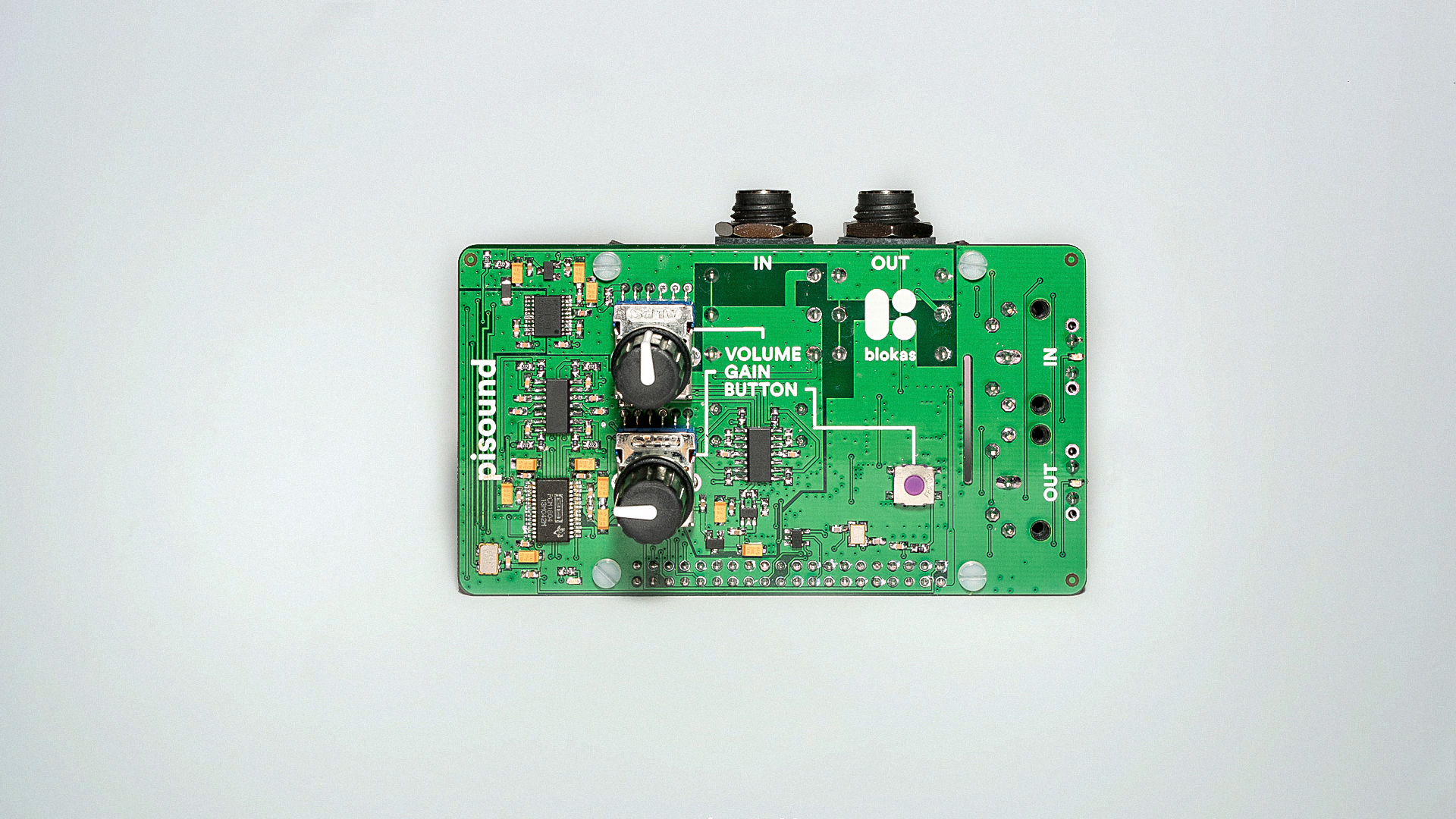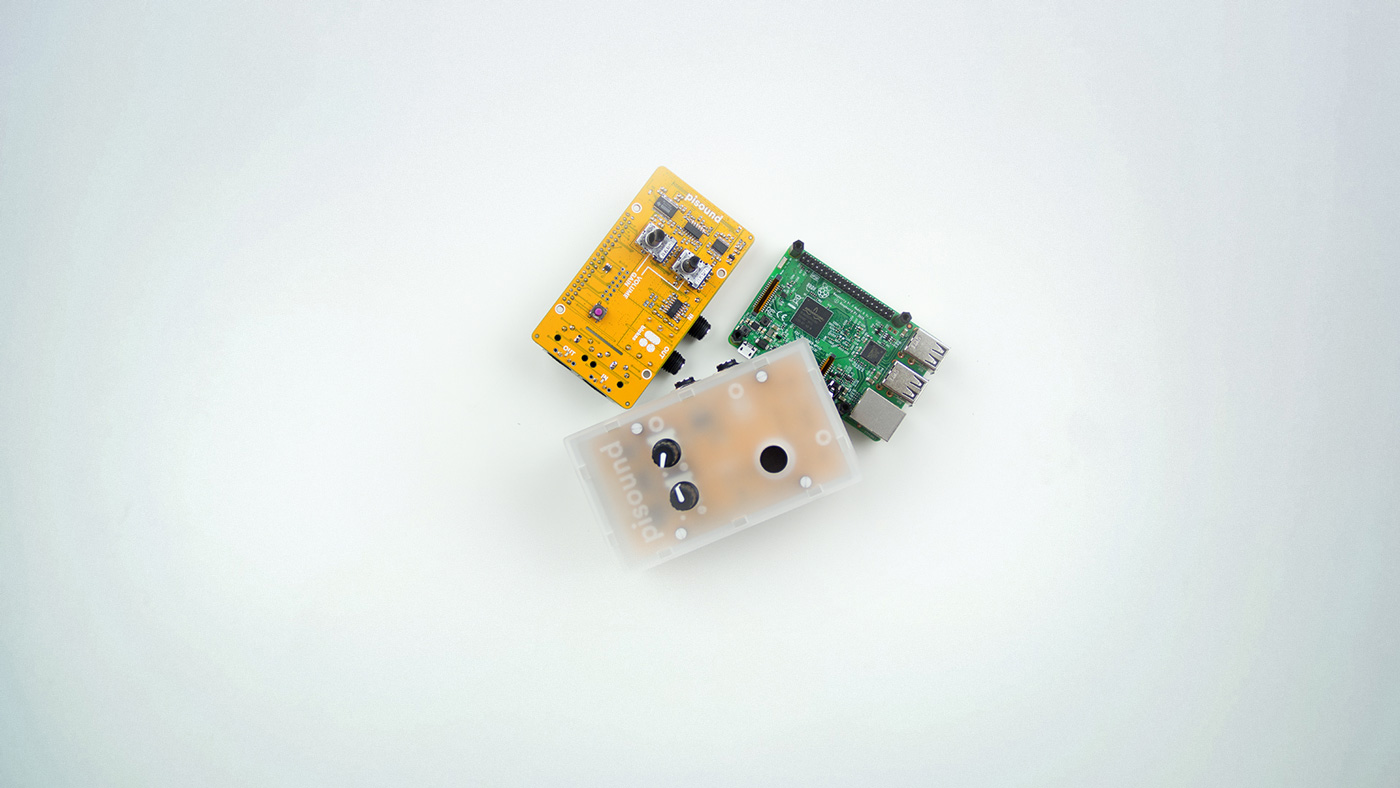Introduction
Pisound
Pisound is an ultra low latency high-quality soundcard and MIDI interface specially designed for Raspberry Pi pocket computers. Equipped with 192kHz 24-bit Stereo Input and Output driven by the legendary Burr-Brown chips, DIN-5 MIDI Input and Output ports, user-customizable button and bundled software tools, it has everything you need to bring your audio projects to life in no time!
See compatible Raspberry Pi models here.
See compatible OSes here.


The Acrylic Case
The Acrylic Case is a simple but really sturdy and beautiful case for your Pisound and Raspberry Pi. The enclosure is cut from semi-transparent 3 mm thick acrylic sheet with cutouts for the Output ports and the Volume and Gain potentiometers. The case comes with 2 variations of the side with all the connectors - one for use with Raspberry Pi version 4 and 5, the other is for the earlier models, so it will definitely fit your Raspberry Pi!

Hardware Setup
Pisound
In the Pisound box you will find 1 Pisound, a leaflet filled with the general info and a plastic bag containing:
- 2 knobs
- 8 screws
- 4 spacers
If you intend to use Pisound with the Acrylic Case, refer to the section below.
Otherwise, fasten the spacers to your unpowered Raspberry Pi, mount the Pisound on top of it via the 40-pin header, and secure it with provided screws. Then put the knobs on the potentiometers and voilá!
Pisound and Acrylic Case
The Pisound Acrylic Case consists of 3 cutout sheets of the enclosure sides and a plastic bag containing:
- 4 short spacers
- 4 longer spacers
- 1 button cap
The case comes with two variations of the side with all the connectors - one for use with Raspberry Pi version 4, the other is for the rest of the models, so make sure to use the correct one for your Raspberry Pi!
Full assembly instructions are here.
@mzero, a member of Electric Kitchen project has made a great detailed Pisound Case assembly video.
Connect Things
Raspberry Pi in combination with Pisound allows you to connect a huge variety of different types of audio-related gear. Thanks to Pisound's Stereo Input with a wide-range gain control design, you can connect audio sources ranging from your bass guitar to a CD player or your modular synth. Using Stereo Output you can hook Pisound to any mixer, speakers, or just plug in your headphones. Volume and Gain levels can be controlled using onboard knobs. For MIDI connectivity you also have a lot of options - MIDI In/Out through on-board DIN-5 sockets, USB-MIDI via Raspberry Pi's USB ports or even WiFi-MIDI!

Don't have any software running on your Raspberry Pi? Head straight to Software for The Raspberry Pi section!
Need to install The Pisound Software? Head straight to The Pisound Software section!
Comments & Questions
For more tips & tricks join our community forums! 👋If you have any questions about the information on this page let us know below! 👇